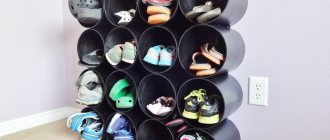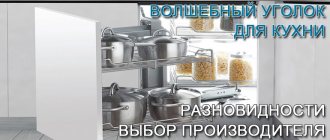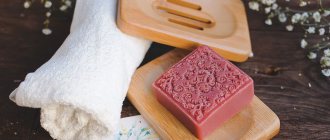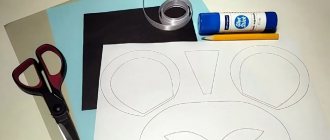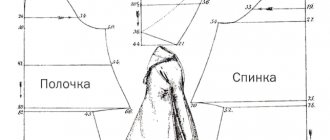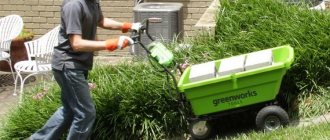A DIY shelving unit is not only simple, but also economical. If you have never made something with your own hands before, then a whatnot is the first step for a novice craftsman.
What is a bookcase? This is a furniture option that consists of shelves combined into a common structure. The shelf can be used for flowers, shoes, personal care products or tools.
There are no restrictions on the use of shelves, except for weighing ones. You should not load the bookcase with too much weight, because it is not a rack.
A bookcase, as you know, is a cabinet without walls.
Long gone are the days when the whatnot was the “highlight” of the living room and the hostesses of secular salons vying with each other to see whose was cooler.
The benefits of making it yourself
Do you know what the advantages of any “hand-made” product are?
- Savings in its purest form. Often, when buying a finished item, you have to overpay for the brand name, for low-quality material purchased in bulk, and for the work of the craftsman.
- Meets all requirements. You make a bookcase according to certain technical characteristics: width, height, number of shelves, material, color. Of course, stores offer a huge variety of options for any furniture. The bookcases were no exception. But most often, products produced on a machine are measured in whole units. You can make an interior item that is ideal in size and style.
You can name other advantages to making a bookcase with your own hands, but all the main ones are highlighted.
It is also shelves height from the floor, sometimes on wheels, or a rack for a relatively small operational load, not attached to the floor, walls or ceiling.
Nowadays, most of the shelves in everyday life are used to place indoor plants.
Setting up the kitchen
It happens that in the kitchen there is a narrow space between pieces of furniture, which spoils the appearance and seems to be unsuitable for use. We offer you a master class on how to make a roll-out shelf.
You need to prepare:
- boards, according to the number of shelves you plan to make;
- slats;
- furniture wheels;
- handle for easy rolling out;
- wooden slab;
- screws and dowels;
- glue.
We measure the space that we want to fill with a shelf, and accordingly decide on the width of the shelf. We cut the necessary parts.
We begin to attach the shelves to a wooden slab, which will serve as the back wall of the product. Before assembly, coat the joints of the parts with glue, and only then connect them with screws.
We screwed the shelves, now we fix the sides.
You can press it with a weight for better adhesion of the glue.
The base is ready.
Now we glue the slats that will prevent the contents of the shelf from falling from it.
Screw on the wheels and handle. We install the shelf in the opening.
The roll-out shelf is ready. And the empty space has been filled, and additional storage spaces have appeared.
Deciding on design and construction
The design of the bookcase depends entirely on your desires and capabilities. If we are talking about a bookcase as a decorative element, then you can choose an interesting material: rattan or glass, beech or forged metal.
A multifunctional piece of cabinet furniture that can effectively zone a room and be aesthetically significant in the interior.
Here the openwork of the whatnot works for functionality: using the whatnot, plants can be placed on a minimal floor area so that they do not shade each other and it is convenient for the owner to care for them.
Naturally, only a true master who knows how to work with this or that material and has the necessary tools can do this with his own hands.
You can make a bookcase from any more or less durable and workable material, but novice furniture makers should not get carried away with their variety.
For the same purpose, special shelves for flowers are built, but they are, as a rule, stationary, attached to some kind of base, and the shelf is adjustable.
Speaking of practical applications, making a bookcase with your own hands is quite simple. The design consists of two vertical bases and horizontal shelves between them. There are an incredible variety of mounting options and they depend on the material of manufacture.
- The easiest way is to screw the shelves to the base from the outside. This assembly method is relevant for wooden shelves. If you think that it will not be beautiful, then we can reassure you, there are plugs for self-tapping screws in different colors.
- Each shelf has holes in the corners; posts are inserted into these holes to separate the shelves from each other. Most often, this design is offered for plastic shelves for bathtubs or shoes. But glass shelves can also be organized in a similar way. Dividing posts can be chrome plated. Although metal can also be assembled into a bookcase in a similar way.
- The variety of fittings allows you to choose fastening elements hidden in the body of the product.
Shelves assembled using hidden mortise carpentry joints are rarely made independently, and are expensive to sell.
Even today, a shelf can become a key element of interior design.
These are the main examples of whatnot design. You can improvise or use decor. Thus, forged elements can give the simplest and most inexpensive wooden product not only charm, but also luxury.
The most durable is a wooden shelf assembled with an overlay.
Well-made rustic furniture looks amazing and fits into almost any interior, down to the loft.
To the hallway
In a modern hallway, after installing a hanger, wardrobe, key holder and shelves for small items, there is often no space left for a large bookcase. But there is an area of application where a mini-shelf for the hallway is extremely necessary: a shelving unit for everyday, common shoes. Out-of-season shoes are stored in a special shoe rack, but before placing them there, the shoes need to be dried thoroughly.
Improper and correct storage of shoes
There is no need to dry shoes and maintain them as shown on the left in the figure: for shoes to last for a long time, they must dry evenly on all sides; especially from below, from the sole. For this purpose, use special shoe shelves with lattice shelves, on the right in Fig.
Drawings of a shoe rack in the hallway for everyday shoes are given below. rice. Material - scraps of cellular polycarbonate and PVC or metal-plastic pipes in a PVC shell. Both can be purchased cheaply from plumbers and awning, gazebo, and greenhouse specialists. You can also use propylene pipes, but then you will need to drive hardwood bosses into their ends and assemble a shelf with self-tapping screws, because Polypropylene does not stick to anything firmly enough. Holes for pipes are drilled with a Forstner drill or cut with a mounting knife.
Drawings of a shelf for the hallway
If the materials are polycarbonate and PVC, then the shoe rack is assembled using dichloroethane glue: polycarbonate sawdust is dissolved in dichloroethane until the consistency of low-fat kefir or yogurt is obtained. Remember: dichloroethane is a volatile, toxic, flammable liquid and must be handled with the necessary precautions!
Necessary materials
How to make a bookcase with your own hands is clear. You should decide on the materials needed in this matter.
- Assembling a plastic shelf bought in a store is as easy as shelling pears; just assemble the “construction set” according to the instructions and use it with pleasure.
- When working with wood, in addition to the main material, you will need fastening elements (screws, nails, corners). Let us note that wood is a material subject to mechanical damage: the wood dries out, the wood rots, and insects eat it. To protect your piece of art, you should coat it with varnish or wax. To add color, you can use paint or tints.
- If we are talking about metal, then you should study the issue in more detail. In an apartment, an iron shelf can be used quite rarely. There is stainless steel in the kitchen, stainless steel in the bathroom, stainless steel in the hallway. Ferrous metal is only suitable for a tool.
- Glass can be a material for shelves, both individually and in the overall design.
It may have four or more legs with shelves between them. As a rule, it does not have back or side walls.
Those who want to learn how to make rustic things are faced, first of all, with two tasks: aging the wood while simultaneously increasing its decorative qualities and surface strength, and also, as regards rack-mounted shelves, adjusting the junction of branch cuts for the racks.
Working with all these materials requires certain skills and tools. What can we say about more complex materials?
A type of shelving made from overlay planks is household frameless (with sidewalls made of one board each) shelving-ladders.
Use decorative forging, ropes or leather inserts
How to make a classic shelving unit with solid walls
Classic shelving is reinforced with a solid frame on the outside, and sometimes also with a back wall. This design will withstand heavy loads, such as full shelves of books.
What do you need
- Plywood sheet 2×125×250 cm;
- plywood sheet 0.6×125×250 cm;
- three slats 2.5x5x250 cm;
- one rail 2.5×8×250 cm;
- a circular saw;
- pencil;
- long ruler and tape measure;
- jig for drilling ends (if any);
- drill with a diameter of 3 mm;
- clamps;
- drill;
- hammer or nail gun;
- confirmations and nails;
- 220 P grit sandpaper;
- paint and brush, wallpaper and glue (optional).
How to do
Unfold the plywood sheets and battens onto the following elements.
Frame:
- two side walls 2×30×180 cm;
- five shelves 2x30x70 cm;
- top of the rack 2×30×75 cm;
- back wall 0.6×75×180 cm;
- bottom plug 2.5×8×70 cm.
Facial finishing:
- two vertical slats 2.5×5×170 cm;
- two horizontal slats 2.5x5x75 cm.
Let us remind you: if you do not have a circular saw, you can cut the elements to the desired size at a hardware store.
Frame: The Home Depot / YouTube
Mark under the shelves on the side walls. Using a pencil and ruler, place marks at a distance of 8, 36, 72, 108, 144 cm from the bottom edge.
Frame: The Home Depot / YouTube
To install shelves, prepare holes for fasteners. If you don't want the screws to be visible, use a jig and drill holes in the shelves at a sharp angle. If there is no jig, drill through the outer side walls of the rack at right angles along the marking lines from the previous step. In both cases, step back 5 cm from the edges.
Frame: The Home Depot / YouTube
Assemble the outer frame with nails and reinforce the joints with confirmats. Place the shelves along the marking lines and screw the euroscrews into the pre-prepared holes.
Frame: The Home Depot / YouTube
At a distance of 10 cm from the front surface, attach the bottom plug in the same way as you attached the shelves.
Frame: The Home Depot / YouTube
Nail the trim pieces around the perimeter of the frame. To do this, use a nail gun or a regular hammer.
Frame: The Home Depot / YouTube
Sand the surfaces and paint if desired.
Frame: The Home Depot / YouTube
Attach the back wall with nails.
Frame: The Home Depot / YouTube
If you haven't painted the back wall, you can, for example, stick wallpaper on it.
Frame: The Home Depot / YouTube
What other options are there?
Such a rack can be of any shape, for example triangular:
Or stylized as antique:
A classic shelving can be made from one material, as in this master class, where it is made from MDF sheets:
Required Tools
what tools you will need to assemble a bookcase with your own hands ; it depends directly on the material.
When working with plastic:
- hands and intelligence.
If the material is wood:
- screwdriver or drill;
- hammer;
- sandpaper;
- brushes
If the shelf is iron:
- welding machine;
- Bulgarian;
- sandpaper.
Glass shelf:
- glass cutter;
- sandpaper;
- grinder (for cutting jumper pipes).
For the strength of the attached ladder shelf, its shelves must be box-shaped without extension.
Some knowledge about measures to ensure it is useful not only for designing furniture.
It’s not a fact that all the tools will be useful to you, but you shouldn’t start work without having basic technical tools at hand.
Rack-mounted shelves have the highest ratio of strength to the amount of material required for manufacturing.
The same openwork will allow you to express yourself in an object and get a unique thing with minimal consumption of material.
Features of assembling metal shelving
Metal racks can be welded or assembled with bolts. There are usually no problems with welding. If a corner is used, the joints can be overlapped - a difference of 3-5 mm when laying shelves is unnoticeable. If you wish, you can cut out the excess in one of the shelves and butt weld, but trimming takes a lot of time, and you still won’t see much of a difference.
How to cut corners for a smooth connection
When assembling a frame for a bolted shelving, the order is as follows: first, assemble the squares of the sidewalls and shelves separately, then screw them together. It is advisable to have at least two bolts for each connection - for greater rigidity (less play).
If you assemble garage racks from a profile pipe with your own hands, the procedure is different. First, the sidewalls are assembled, and short crossbars are attached to them. You get two rectangles with crossbars. Then they are connected by crossbars.
Methods for bolting profile pipes
See the photo for how to make connections. In one case, welding is still needed - weld the heel pad, in another you can do without it - cut out the "ears", bend them and cling to them.
There is another way - special crab systems. These are metal plates with recesses molded to fit the profile. Pipes are placed into the grooves, then the two plates are bolted together.
Crab systems for profile pipes
Such a connection is unlikely to withstand very heavy loads, but there is an undeniable advantage - you don’t have to drill a bunch of holes in the metal. In a profiled pipe this is certainly easier than in a thick-walled corner, but it still takes a lot of time and effort.
By the way, the bolts used are M8 or M6, so large holes are required for them. It is easier to first drill with a thin drill, then expand to the desired size with a thick one. But even with this order, you will need a significant number of drills. To make them overheat less and break less often, place a jar of water nearby and periodically lower the drill into it.
Manufacturing process: step-by-step instructions
It’s quite difficult to say how to make a bookcase if you don’t know what material and design option you will choose.
The process looks like this:
- choice of material;
- design choice;
- measuring the height and width of the product;
- production of horizontal shelves (size should take into account vertical racks
- production of vertical support);
- assembly;
- decoration.
The plan is quite general, but the design of the bookcase is not a standard of skill, but only the first stage.
Rack-mounted shelves are assembled using glue and pins that pass through the shelves and go into deep holes (sockets) along the axis of the racks.
You can make a bookcase from any more or less durable and workable material, but novice furniture makers should not get carried away with their variety.
General design issues
Rack with shelves
First of all, you should forget about the first ideas that come to mind - creating the simplest hanging shelves, with a load or area that can accommodate all the property currently contained in the garage. Firstly, this is not rational from the point of view of their manufacture, and secondly, over time, the volume of things stored in the garage increases, so new and new designs will have to be made.
Therefore, it is immediately necessary to plan the design of the shelves in such a way that it is:
- universal
- expandable
- as easily movable as possible
That is, it is advisable not to make each shelf separately, but to make an entire rack consisting of several shelves as a single structure.
Rack with cabinet
The next important question is what the design of the rack will be - collapsible or not. Typically, non-removable structures are more durable and can withstand heavy loads, however, their disadvantages include difficulties in expansion, dismantling and transportation.
Collapsible structures are less stable , their rigidity is far from that of non-collapsible ones. Often, for additional stability, such structures have to be attached to walls. However, they have two special advantages - easy expandability and mobility. In addition, thanks to their modularity, shelving can be made in a variety of sizes.
In this case, the choice depends solely on the desires of each person.
The final stage is decoration
If you are interested in the question of how to make a bookcase with your own hands, the answer is in front of you. But how to decorate a ready-made bookcase? The easiest way is painting. Choose a color that suits you and paint your counter shelf in wood or metal. Use decorative forging, ropes or leather inserts. Wood is combined with metal, textiles, and plants.
Functionally, the shelves of rack-mount shelves can be of any required height and extended to almost the entire width.
A forged or cast bookcase can be a work of art, but is functionally very reliable and durable.
Good luck!
Rack-mounted bookcases have a rather serious drawback from the point of view of an amateur: in order for the bookcase to turn out beautiful and original, you need turned wooden parts.
What are they made from?
As already mentioned, garage shelving is made of wood and metal. Wooden ones are lighter in weight, it is easier to work with wood, but they do not withstand such heavy loads. Metal ones are heavier (many times heavier), but you can lay an elephant on them.
There is also the issue of price. Rolled metal is not cheap at all these days. If you buy everything at the market or in a store, one rack (including consumables) will cost you almost the same amount as a finished one. The only real way to save money is to buy metal at a metal warehouse in whole lengths (there are 6 m and 12 m), and then cut it into pieces of the required length. The cutting can be done directly at the base; you will have to pay additionally for the services, but the amounts are quite small. In this case, you will be able to reduce costs by about 20-30%.
One of the layout options
Lumber costs less than metal. But don’t think that the costs will be small: you will have to buy graded wood without knots, and this is the “elite” or “premium” class with a corresponding price tag. So it won't be very cheap.
Made of wood
Operating conditions in the garage are far from the best - high humidity, frost, alternating freezing/freezing, and sometimes heat. Not very good for wood. Therefore, all material must be treated with antibacterial and protective compounds before work. Use wood products for exterior use, as conditions in an unheated garage are more similar. You can choose a product that simultaneously tints the surface being treated and your product does not need to be painted. After processing, the materials are dried and only then work begins.
How to connect bars
When connecting parts of a wooden rack, you can use standard methods for carpenters - quarter-foot or half-foot. If this is difficult for you, you can also butt nail and use metal angles and/or overlay plates to reinforce the joints.
Another point: it is better to connect with nails, not with screws. The result is more stable and fewer connections become loose. If you choose the option with reinforcement with plates, they can be mounted with self-tapping screws.
Wooden garage rack
Now in terms of size: for racks they usually use 50*50 mm timber, for crossbars you can use the same timber or a little thinner - 50*30 mm. Flooring is made from:
- boards with a thickness of at least 21 mm;
- moisture-resistant plywood with a thickness of 10 mm;
- laminated chipboard;
- OSB.
The cheapest are boards and plywood. Laminated chipboard is much more expensive, but it does not need to be painted, which is a good plus. In order not to spend a lot, you can take the first and last sheets in a pack at the bases - they are scratched and are much cheaper.
Wooden shelving for the garage - drawing with dimensions
Another point: chipboard shelves have an open side cut. If it is not treated, as humidity increases, the chips will swell and the shelf will begin to warp. To prevent this from happening, coat the edges with silicone. With this treatment, nothing will happen to the chipboard.
Metal
If you decide to make metal shelving for the garage, the choice of materials is wider - there are two options for rolled metal, plus standard solutions for warehouses (perforated corners). You can also use metal parts intended for other purposes - for example, steel cable racks or cable channels that are used in communications are suitable.
Cable channels and shelves - convenient and not very expensive
So, what is the frame of a metal garage shelving made from:
- From a metal corner with a metal thickness of 3-4 mm. The width of the corner shelf is 25-45 cm, depending on the planned loads. Durable, but metal-intensive material, weighs a lot, and is expensive.
- Profile pipe (rectangular in cross-section). With less metal consumption (less wall thickness), compared to a metal corner, it has better elasticity characteristics (more difficult to bend), and is more resistant to torsion. Approximate dimensions for racks are 50*50 mm or 40*40 mm, for crossbars 50*25 mm or 40*25 mm, respectively.
- The racks are made from corrugated pipe, and the crossbars are made from angle iron. The thickness of the metal is 2-3 mm, the width of the shelf is 25 mm or more. Unfold the corner so that the laid flooring looks like it is in a “nest”.
Take a closer look at how the corners are located.
The flooring on the shelves is made from the same materials as for a wooden rack (board, plywood, OSB, chipboard), only sometimes non-standard options are added, which are used sharply with a wooden frame due to the high mass - sheet metal.
The board remains optimal for most regions - a reliable, not very expensive material. You need to take wood, without knots (with a minimum of knots) with a thickness of 21 mm. Treat with antiseptics, then paint.
The advantage of metal shelves is high reliability with a small thickness, the disadvantages are price, weight and “loudness”. They also need to be painted, but first clean them of rust, then go over them with a rust converter and primer, then paint them, preferably in two layers. Also, by the way, the metal frame must be processed. Then the rack in the garage will not rust.
DIY bookcase: 50 photo design ideas
PreviousShelves and racksMaking a shelf for the wall with your own hands
Next
Shelves and racksThe “house” shelf is a convenient and original idea for a nursery
Diagonal option
This type of wine placement is practiced everywhere. Any person can do it. To do this, it is enough to have some kind of wooden box or knock it down yourself.
When making it yourself you need:
- Cut four identical pieces of wood that are equal in width to the height of the bottle (or slightly less). Ideally, when assembling them, you should get a square.
- Measure the diagonals and cut 2 more pieces according to the resulting dimensions. These are the main elements.
- In the middle of each of them (up to half) a groove is cut with a width equal to the thickness of the wood.
- Insert elements into each other. You should get a design that resembles the letter “X” or a cross. It is placed in a square and secured with self-tapping screws. The bottles are placed in the resulting compartments.
Preparation of the drawing
The most crucial moment in all independent work is preparing the drawing. The following parameters must be displayed on the diagram of shelves and racks:
- Design dimensions.
- Depth of shelves.
- Distance between adjacent shelves.
- The width of the retaining sides (as a rule, their role is played by metal corners).
All available additional parts (hooks, wheels) must be indicated on the diagram in the appropriate scale. Ready-made drawings and designs for interesting shelving can be found and printed before starting work.
